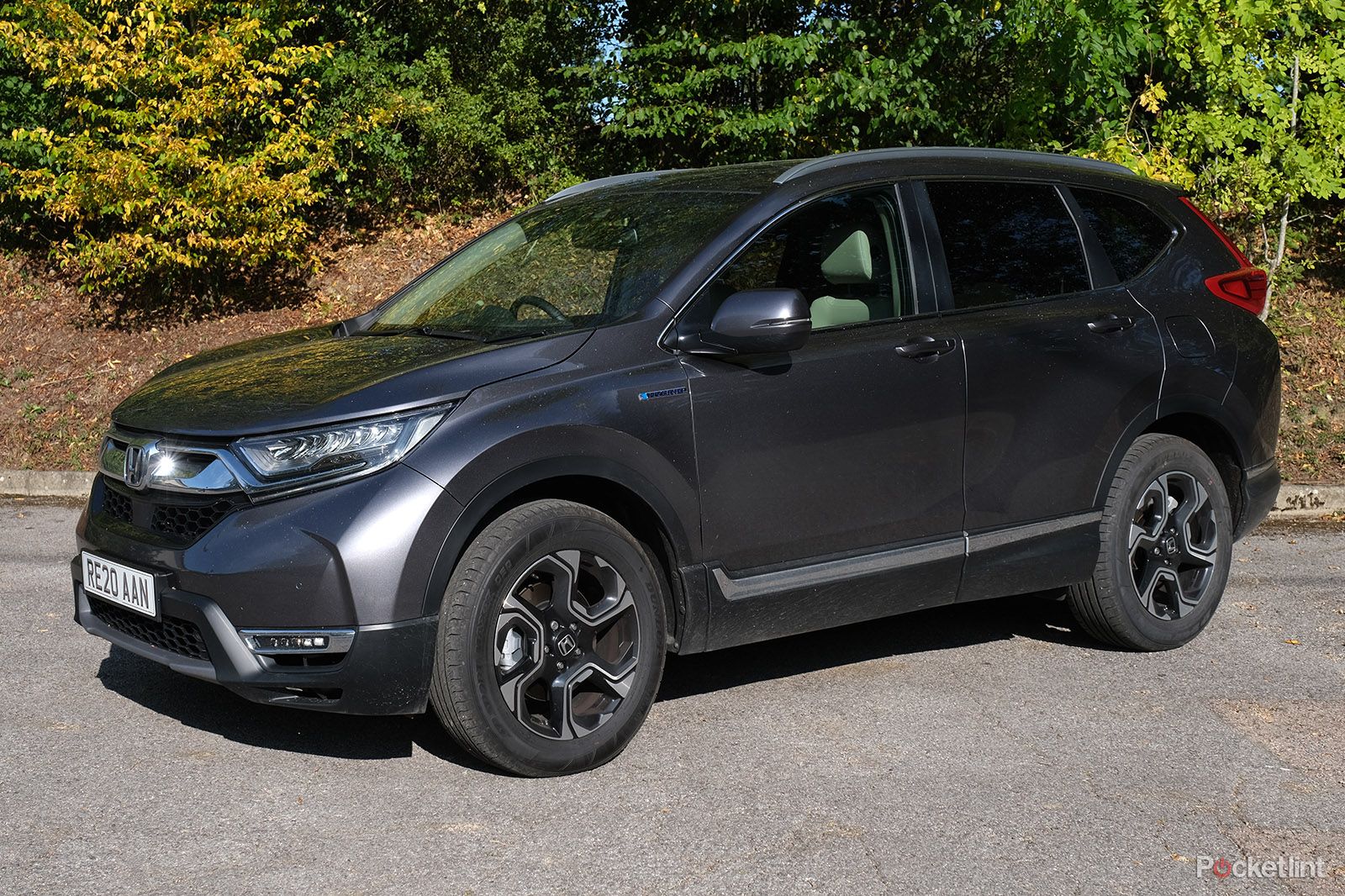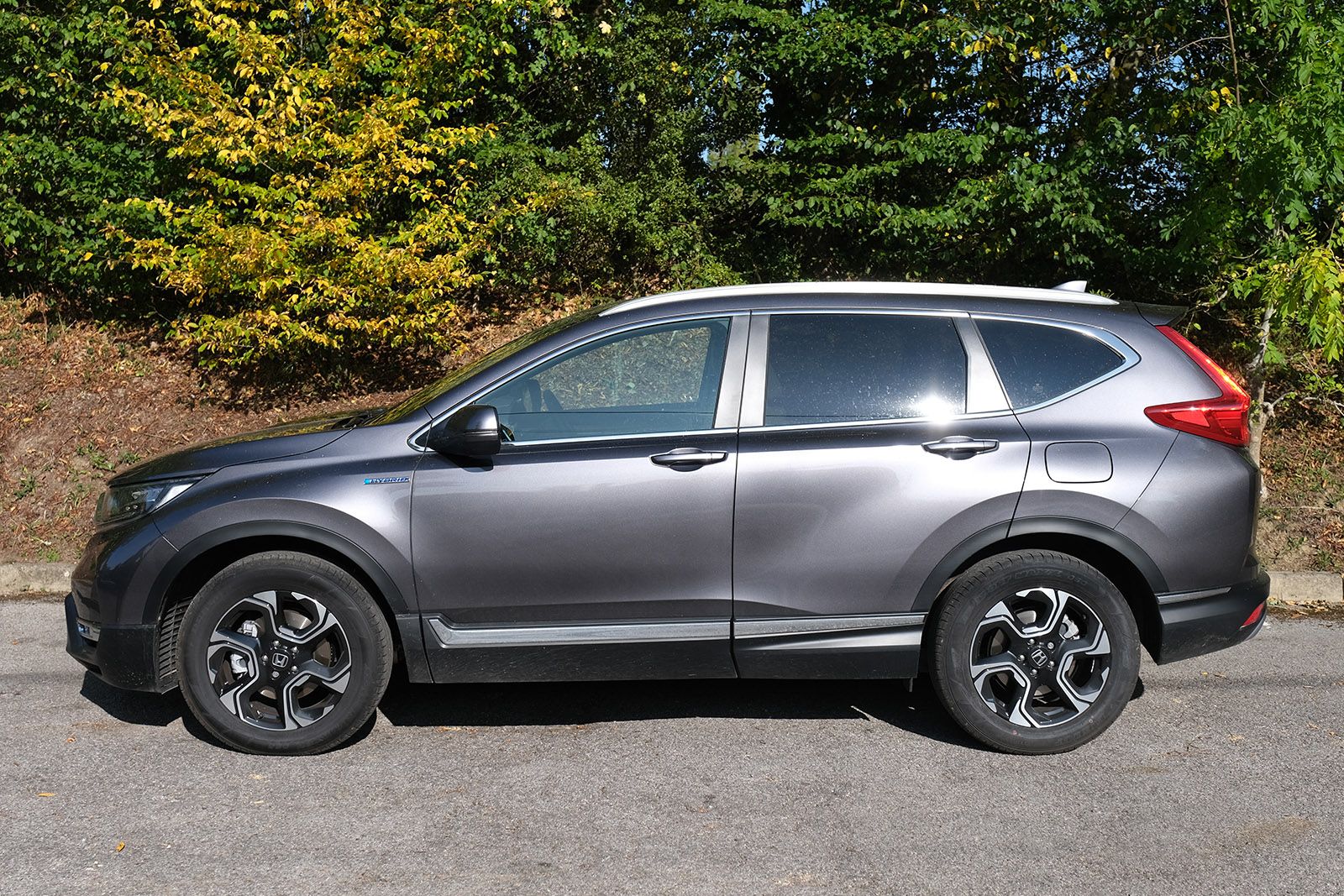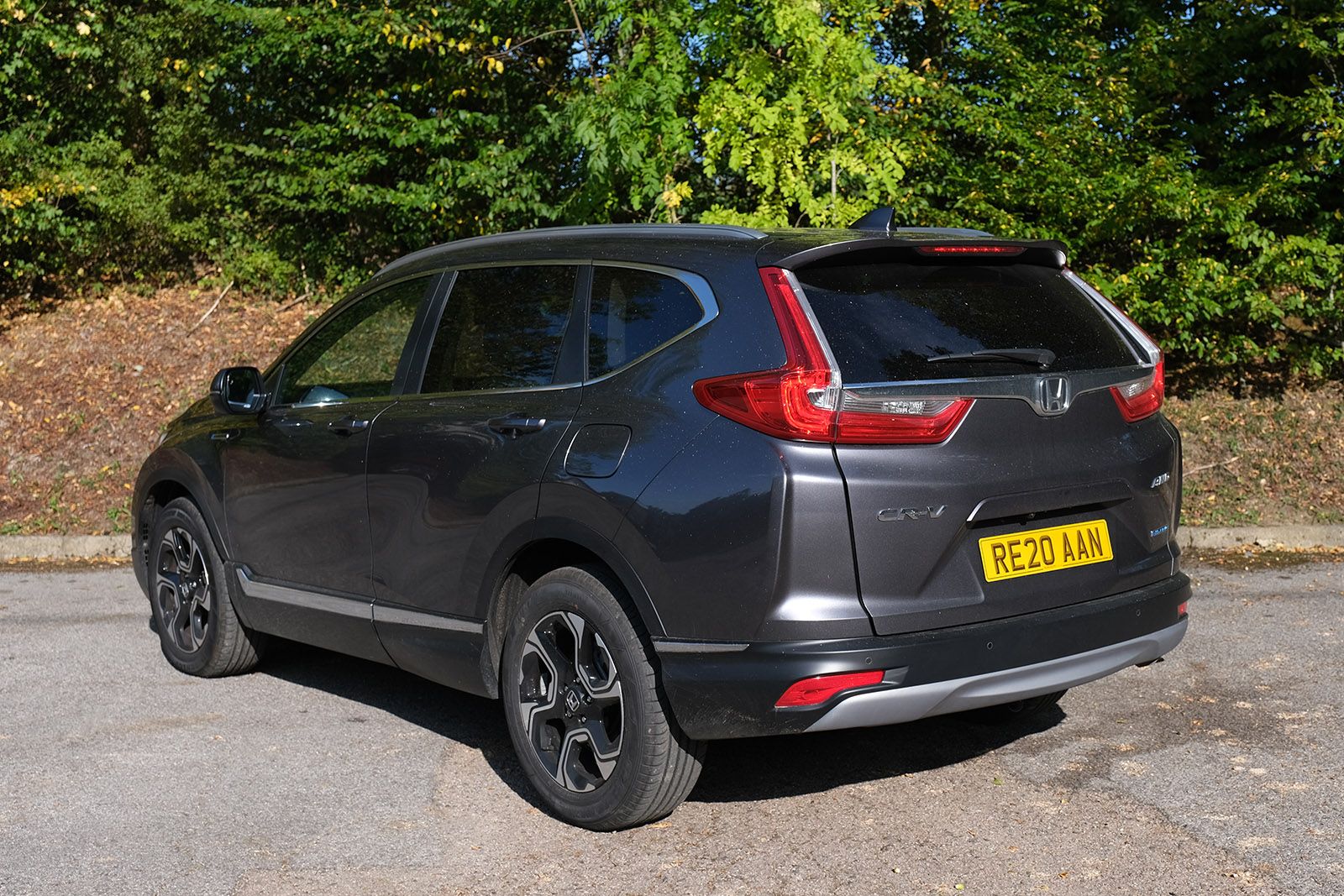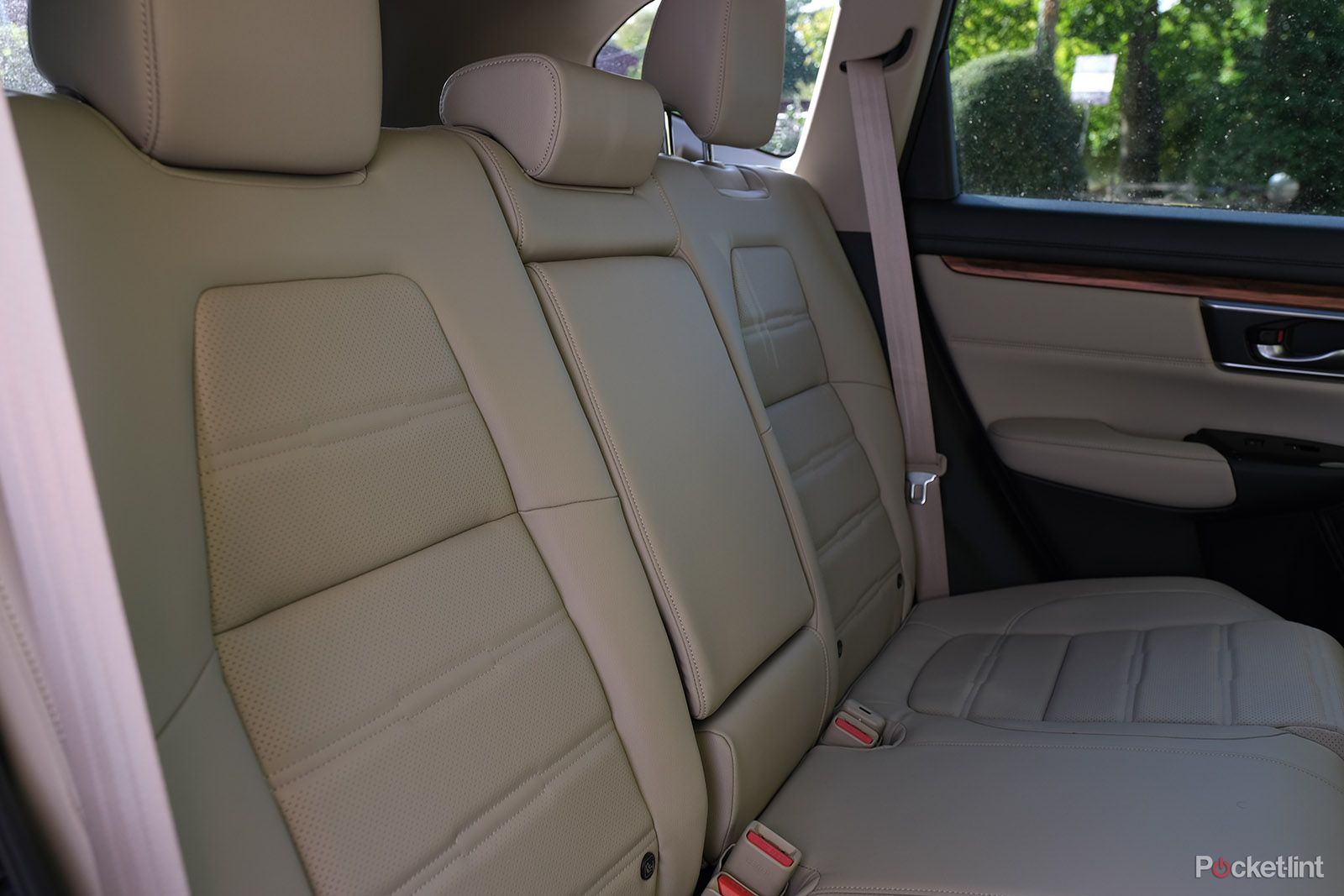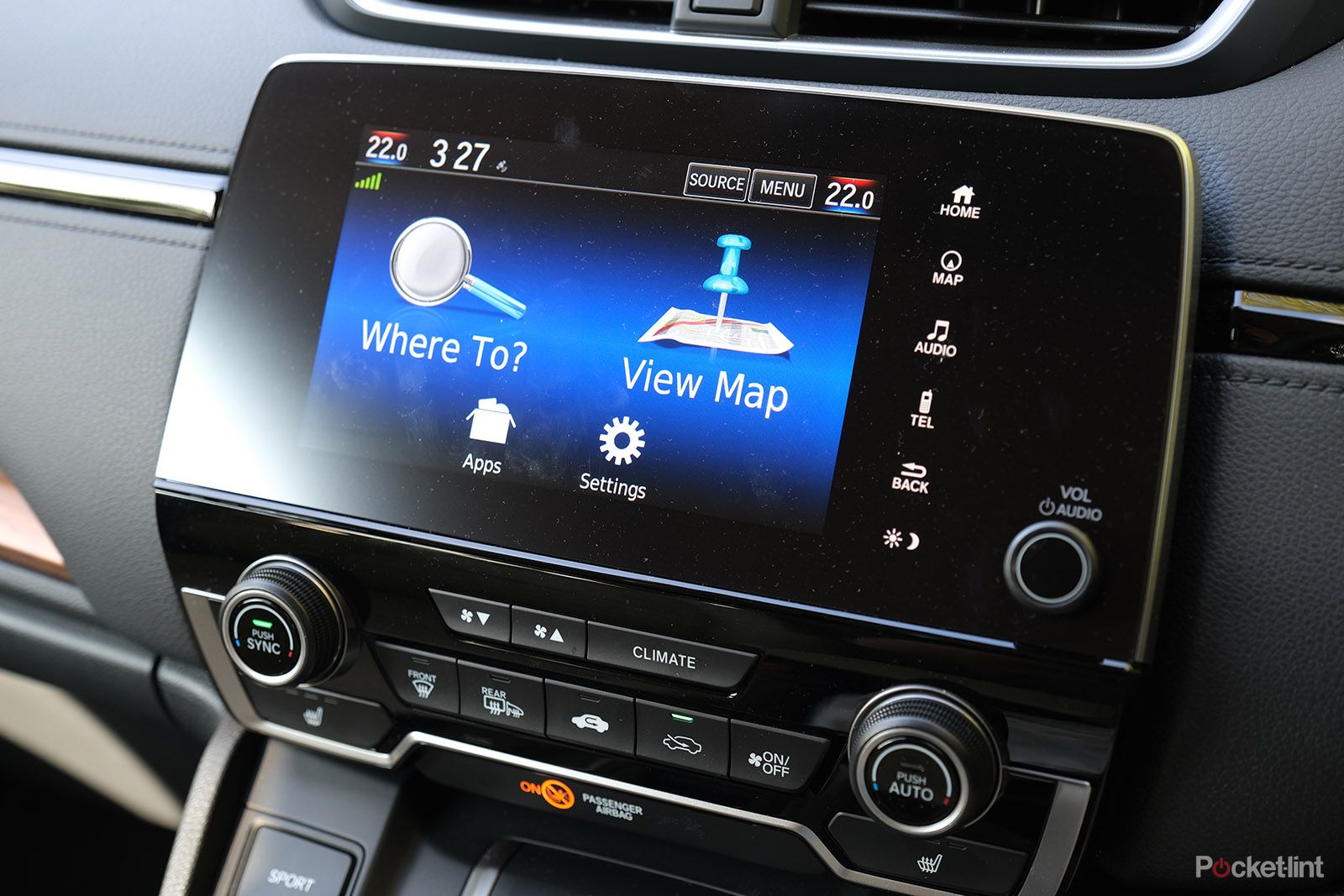Back in 1999 Honda launched a small, quirky coupe known as the Insight. It was the first hybrid car to officially be sold in the UK, beating the Toyota Prius to our shores by a matter of months.
Since then, most of the Honda range has received the hybrid treatment at one stage or another, so it's perhaps surprising that we've had to wait so long for the company's first hybrid SUV.
Outwardly, the new Honda CR-V Hybrid is fairly conventional. There's no plug-in option as yet, so its electric-only range of 1.2 miles is about what you'd expect. Underneath the skin, however, it's subtly different to the majority of existing hybrids.
Our quick take
The Honda CR-V has never been the most exciting car in its class. Instead, it focuses on providing comfortable, spacious and practical family transport - although in Hybrid form you can't get it as a seven-seater.
Starting at £29,105, the Hybrid is just over £3,000 more than the equivalent petrol model. That's around the same premium that you might pay elsewhere to go from a petrol manual to a diesel automatic, with the Hybrid offering roughly the same reductions in CO2 and fuel consumption.
Thing is, while you needn't plug this SUV in (indeed, you can't), the electric-only range of 1.2-miles only really brings minor benefits. And with so much else coming to market, such as the Skoda Superb iV Estate plug-in - which has regenerative capabilities that would serve better range even if you never plugged it in - it's hard for the CR-V Hybrid to compete against a widening crowd. Even its diesel competition, such as the Mazda CX-5, will serve you well for long journeys with a smaller cash outlay to start wth.
Overall, the Hybrid builds on the standard CR-V's quietly conventional strengths without any major compromises. Its blend of practicality, dependability and build quality is commendable, even if it lacks excitement or a more advanced tech setup inside.

Honda CR-V Hybrid - 3.5 / 5
| FOR | AGAINST |
|---|---|
|
|
How does it work?
For much of the time, the 2-litre Atkinson cycle petrol engine is simply used to power a generator. It's only under high loads that an automatic clutch kicks in to provide a physical connection to the front wheels via a single-speed transmission.
This means the CR-V's control system flits backwards and forwards between three different modes: EV Drive, where the motor simply runs on charge stored in the battery; Hybrid Drive where the engine functions as a generator; and Engine Drive where - you guessed it - the engine is connected directly to the wheels.
In terms of capabilities, it's similar to the 'e-CVT' setup found in cars such as the Prius, but Honda claims its single-speed transmission is smoother, more refined and more compact. We've found it capable enough, but there is that band-on-a-wheel feeling to acceleration - i.e. it's not the quickest to get moving.
Design
The new CR-V range debuted in 2018 and apart from a few badges the Hybrid is identical to the petrol models (diesel is no longer an option, which is no surprise in eco-focused markets).
There's a notable step up in interior space compared to the outgoing CR-V, thanks to a longer wheelbase, although the battery pack does eat into the boot volume somewhat on the Hybrid. That also means the Hybrid is denied the regular CR-V's seven-seat option, but unless you have young children that's unlikely to be a concern. That said, whether you'd want a vehicle this large without such capacity is up for question - it's not as visually refined as many other SUV options on the market in our view.
Indeed, Honda has played it quite safe with the styling, both inside and out. You won't find any giant touchscreens looming out of the dash, any fancy ambient lighting, any delicate visual touches. It is, however, cleanly presented and logically laid out. Material quality is generally very good too, although there are a few flimsier plastics to be found and not everyone will be a fan of the wood-effect trim (see our pictures) - count us in on that - but fortunately there are other options are available.
What's it like to drive?
As with the rest of the range, the Hybrid comes with choice of two-wheel drive or four-wheel drive, but the motor and battery configuration remains unchanged.
Consequently, it's the lighter two-wheel drive variant that's quicker off the line, covering 0-62mph in a respectable 8.8 seconds (versus 9.6 seconds for its four-wheel drive counterpart). The two-wheel drive variant is also marginally more economical, posting an official combined fuel consumption figure of 53.3mpg, while the four-wheel drive model comes in at 51.4mpg.
Those figures might not sound especially impressive for a hybrid, but they translate well to the real-world, with our test car recording 49mpg - usefully more than we would expect to see from a petrol-only model in similar conditions - when driving from Kent to Oxford for a test day. So while the 1.2 miles of pure electric sounds like nothing - which is accurate in EV-only mode - you can actually see the knock-on benefit here.
You do get clear benefit from the hybrid setup though. Pulling away in EV Drive is remarkably quiet and almost eerily smooth. Outright performance is relatively modest in this mode and it obviously doesn't take long for the battery to run out of juice, but the switch over to Hybrid Drive is virtually seamless.
For a car with no plug-in option, it's also remarkable how often the CR-V Hybrid seems to get by on electricity alone. That said, with so much going on in this space and some great options - such as the Skoda Superb iV Estate plug-in - being available, if you really do want enhanced hybrid benefits then we'd suggest looking elsewhere.
The CR-V's throttle response is noticeably more direct than a typical CVT setup and the sound isn't as intrusive either - thanks, in part, to Honda's Active Sound Control system, which uses the cabin speakers to cancel out certain frequencies in the engine noise.
There's a pleasingly soft edge to the Hybrid's ride, aided by the use of hydraulic bump stops that aren't found on the standard CR-V. It's a good fit with the car's easy-going nature, which majors on comfort. Push a little harder and you can start to sense the added mass compared to the non-hybrid model, but if that's a major factor in your buying decision, the CR-V probably wouldn't be your first choice anyway.
Which trim?
The Honda CR-V Hybrid is offered in various grades: S, SE, SR and EX; with S only available in two-wheel drive form, and EX only with four-wheel drive.
All models come with a sophisticated suite of safety features, dubbed Honda Sensing, which includes automatic emergency braking, lane keep assist, adaptive cruise control and traffic sign recognition. Upgrading to SE adds parking sensors and a rear-view camera, while the SR and EX also feature blind-spot warning and cross-traffic monitoring.
There's a slightly bigger gap to SR spec, which adds smart entry and keyless start, plus a leather interior and active cornering lights. Meanwhile, the top-spec EX edition includes a heated steering wheel, head-up display (HUD), hands-free powered tailgate, heated rear seats, and panoramic glass sunroof.
Tech
Gone are the old CR-V's analogue dials, replaced by a virtual instrument cluster based around a 7-inch LCD display. Along with a large digital speedometer, a power gauge (in lieu of a rev counter) and a charge status indicator, there's what Honda refers to as a content zone. This is a configurable area where you can scroll through things like navigation instructions, media information and smartphone contacts. There's even an Eco function, which can analyse your inputs and award points for greener driving.
From SE trim upwards, the CR-V Hybrid comes with Honda's Connect infotainment system based around a 7-inch touchscreen display. The in-built apps aren't the slickest to use or the smartest to look at, but they do feature plenty of functionality, including Garmin satellite navigation with five years' free map updates as standard.
Smartphone connectivity, however, opens up a host of other options via Android Auto or Apple CarPlay, including Google Maps, Waze, Deezer and Spotify. That's the ticket.
To recap
The Hybrid builds on the standard CR-V's strengths. Its fuel economy and CO2 benefits aren't transformative - think diesel alternative rather than full-on eco car - but do offer a noticeable improvement compared to the regular petrol version. More to the point, the CR-V Hybrid is quiet, comfortable and practical, even if it's not exciting or able to deliver the best going tech setup.

